Featured Panoramic Photo Above:
Classic Charles Conlon photo of Ty Cobb sliding into Jimmy Austin
Baseball History Comes Alive Now Ranked As a Top Five Website by Feedspot Among All Baseball History Websites and Blogs!
(Check out Feedspot's list of the Top 35 Baseball History websites and blogs)

Guest Submissions from Our Readers Always Welcome! Click for details
Scroll Down to Read Today’s Essay
Subscribe to Baseball History Comes Alive for automatic updates (sign-up block found in right side-bar)
As a Free Bonus for subscribing, you’ll get instant access to my two Special Reports: Memorable World Series Moments and Gary’s Handy Dandy World Series Reference Guide!
Roger Maris Photo Gallery
Click on any image below to see photos in full size and to start Photo Gallery:
Steve Falco returns today with an interesting essay detailing just how much Roger Maris meant to the Yankees during his tenure with the Bronx Bombers. The sparkplug to five consecutive pennants I’d say is a pretty good contribution. Steve is resigned to the fact that Roger doesn’t quite have the career stats to merit a plaque in Cooperstown, but concludes he “will always be a Hall-of-Famer to his legions of fans.” –GL
The Yankees’ Slugging Sparkplug: Roger Maris
Earlier this month many of us were once again disappointed that Roger Maris failed to make it into the Hall of Fame. But we understand. Maris did not have the lifetime stats to qualify. He had a fine career and several great seasons, but his injury-shortened years as a pro just didn’t approach Hall-of-Fame standards. We can however reflect on his achievements and take a closer look at how much he meant to the success of those Yankee teams in the early 1960s.
As a two-time American League MVP, Maris led the league in RBIs twice, home runs, runs, total bases, and slugging once. His record-breaking 61 home runs in 1961 surpassed Babe Ruth’s mark of 60 that lasted 34 years and Maris’s 61 stood for another 37 years until it was broken by Mark McGuire in 1998 during the steroid era. But what is often overlooked is what Maris meant to the New York Yankees. Only twice in major league history has a team won five consecutive pennants as the Yankees did from 1960 to 1964, and the most significant catalyst to that achievement was Roger Maris who was acquired by the Yankees from a trade with Kansas City in December of 1959.
The Yankees had dominated much of the 1950s but they stumbled badly in 1959 finishing third behind Chicago and Cleveland. They had an aging right fielder, Hank Bauer, and an aging catcher, Yogi Berra. Their star slugger, Mickey Mantle, had such a disappointing year (for him, only 31 homers and 75 RBIs), that he
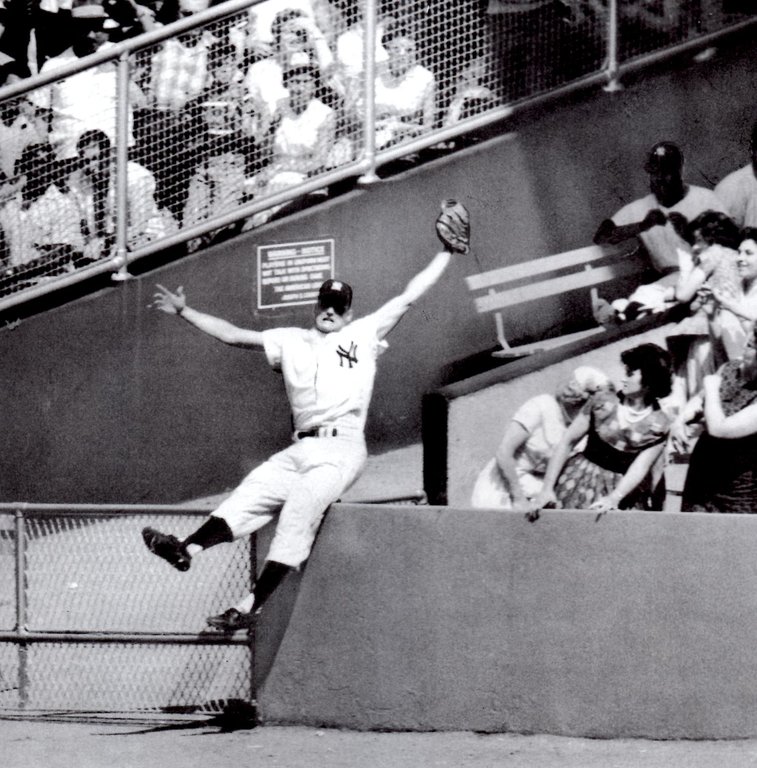
began to hear the Bronx boo-birds. When the season ended there was no reason to expect that the once-mighty Yankees could re-emerge and challenge the go-go White Sox with Nellie Fox and Luis Aparicio, and the powerful Indians with Rocky Colavito and Minnie Minoso. But there was hope for the Yankees upon the arrival of the young outfielder from the mid-west who swung a powerful left-handed bat that would prove perfect for the short porch in Yankee Stadium’s right field.
Roger Maris did not disappoint. In his first game as a Yankee in April 1960 he hit two home runs with four RBIs in a Yankee victory over the Red Sox. He went on to have an MVP season leading the league in RBIs and slugging percentage as the Yankees won the pennant. No longer the sole slugger on the team, Mantle benefited greatly from Maris’s presence in the lineup and rebounded with a fine campaign, leading the league in home runs and runs scored and finishing a close second to his teammate in the MVP voting.
In 1961 Maris not only had a stellar MVP season but this time it was record breaking, as he bested Ruth’s magical home run mark with his 61st home run on the last game of the season. It’s an event I’ll never forget because I was at the game. (How lucky we were that my dad was a procrastinator and waited for the very last game for our yearly trek to the Stadium.) Maris led the league in RBIs
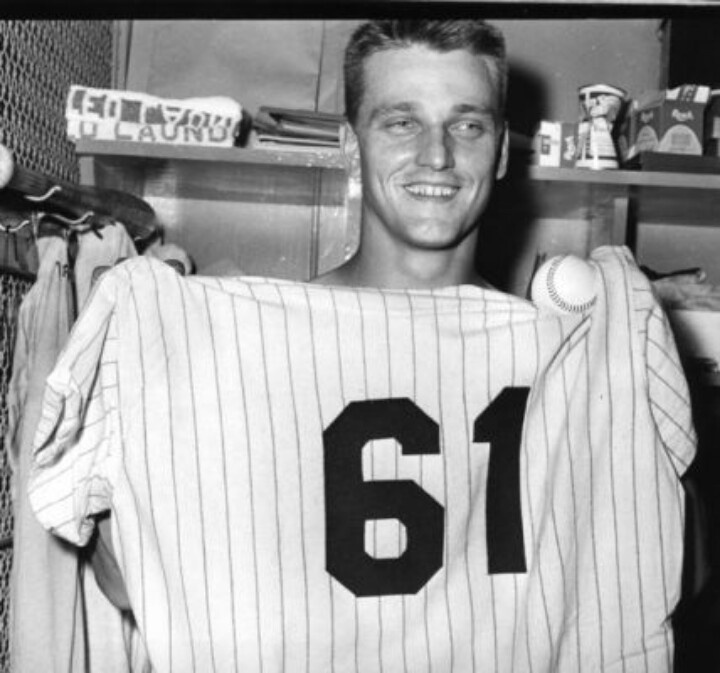
with 142 and tied with Mantle for the league lead in runs scored at 132. The Yankees of course went on to beat the Cincinnati Reds in the Worlds Series. But Roger’s contributions to the success of his team did not end with these two remarkable campaigns. Maris again had a solid year in 1962 leading the Yankees in home runs and RBIs as the Bombers repeated as World Champions defeating the San Francisco Giants in seven games. And it was Roger’s tremendous game-saving defensive play in the bottom of the ninth of that seventh game that prevented the tying run from scoring.
Maris missed roughly half of the 1963 season with injuries, but he still managed to hit 23 home runs and helped his team to their fourth consecutive pennant. He bounced back in 1964 with a fine year batting .281 with 26 homers and 71 RBIs as the Yankees won their fifth consecutive American League pennant. Five seasons with New York, five pennants. Maris was truly a difference-maker for the Yankees.
As injuries plagued number 9 and his production faded, so did the fortunes of the Yankees as they slipped to sixth in 1965 and dead last in 1966. The next year Maris was traded to the Cardinals.
The important thing to remember here is not so much his tremendous hitting—he averaged 36 home runs and 96 RBIs over that five-year span—but his ever presence in the heart of the Yankee lineup. Maris batted in the third or fourth slot nearly 90% of the time. Number 9 was a fixture in Yankeeland those years. Perhaps an all too underappreciated fixture. Yet growing up a baseball fan in those days many of us would try to bat lefty and emulate Roger: Loosen your shoulders with a Maris-like shrug. Then two choppy practice swings and finally the compact, elegant, and always powerful swing.
Roger Maris, the slugging sparkplug for the New York Yankees, will always be a “Hall-of-Famer” to his legion of fans.
Steve Falco
References:
The Baseball Encyclopedia, Baseball Reference.com, The Baseball Almanac,
New York Yankees Seasons of Glory
If you get a chance check out my books: Mickey Mantle’s Last Home and Grandpa Gordy’s Greatest World Series Games
Subscribe to our website, “Baseball History Comes Alive!” with over 1200 fully categorized baseball essays and photo galleries, now surpassing the 700K hits mark at 754K hits: www.baseballhistorycomesalive.com
Take a guess at this week’s mystery players:

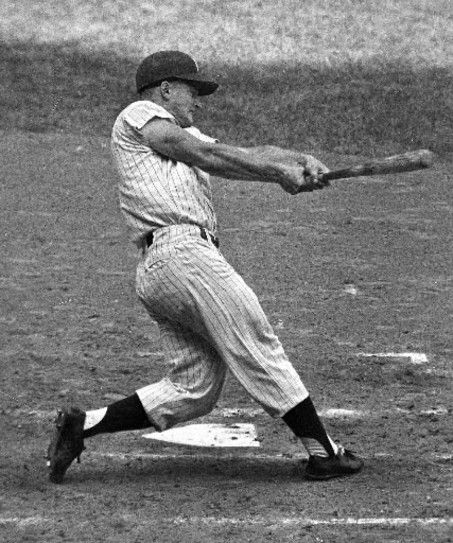
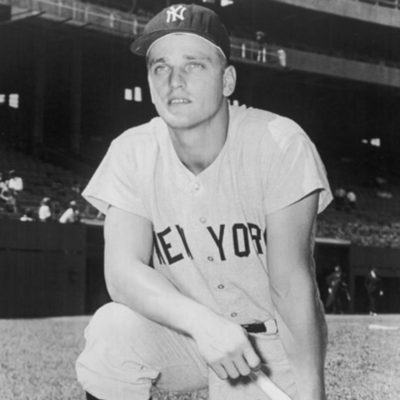
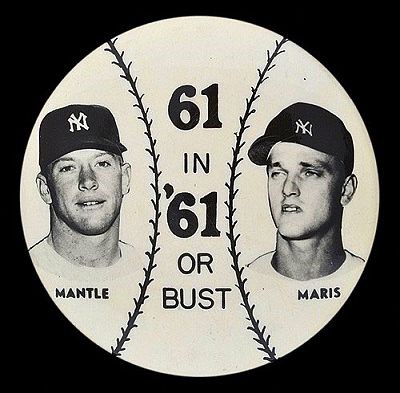
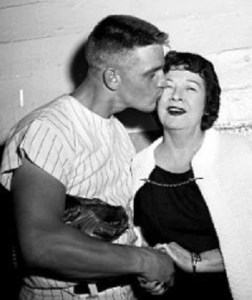
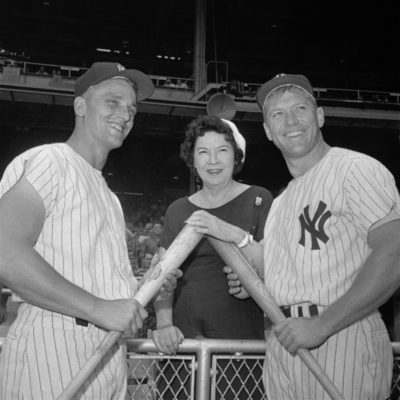
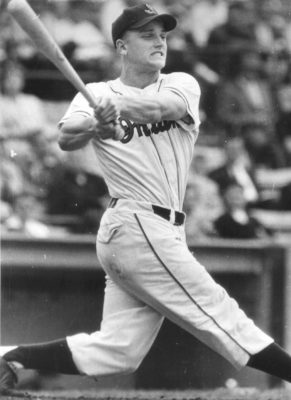
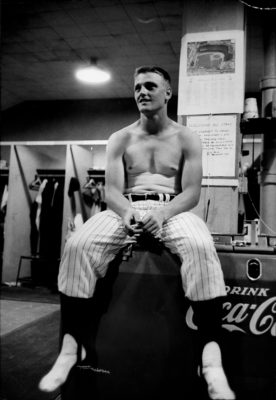
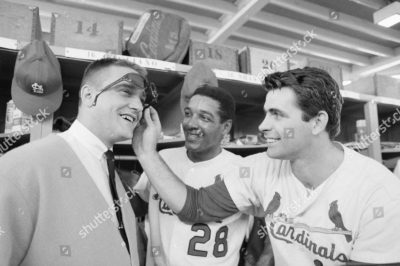
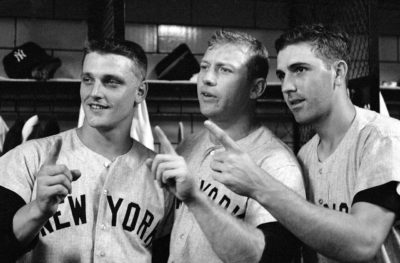
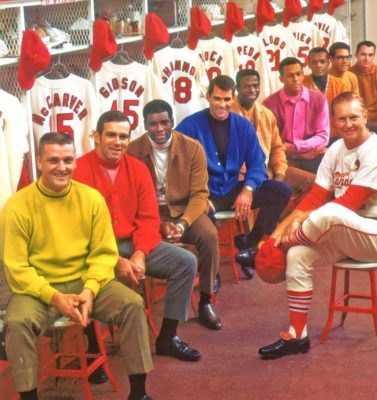
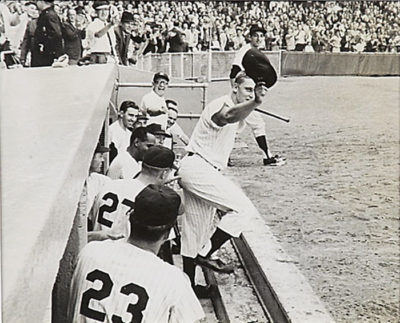
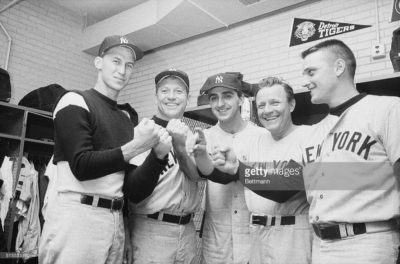
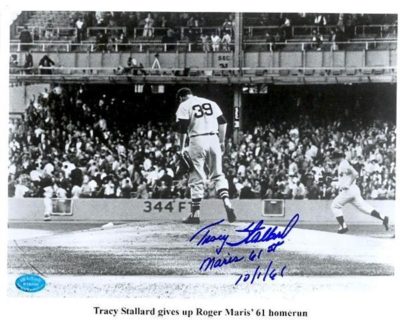
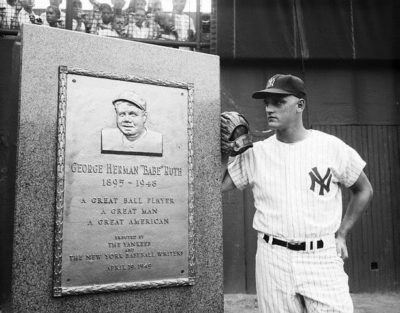
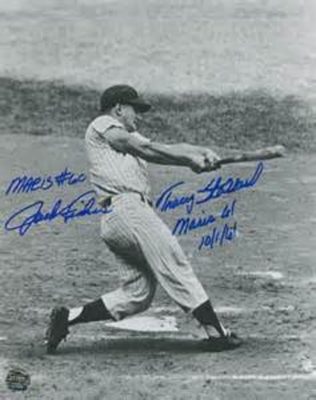
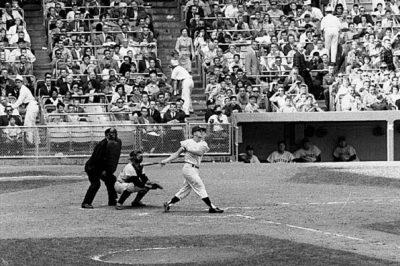
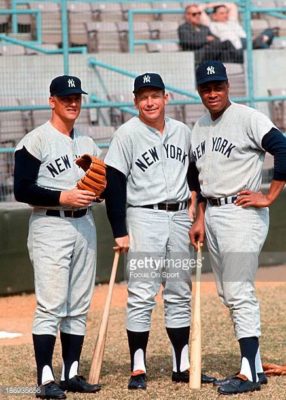
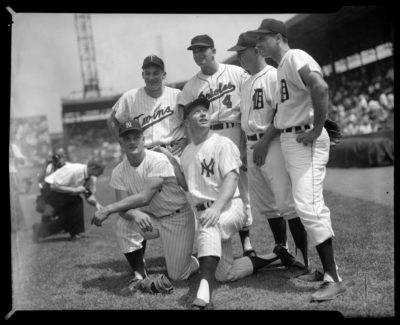
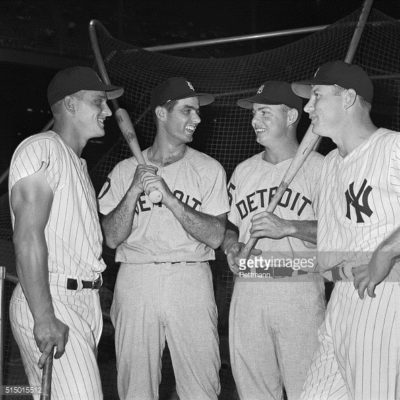
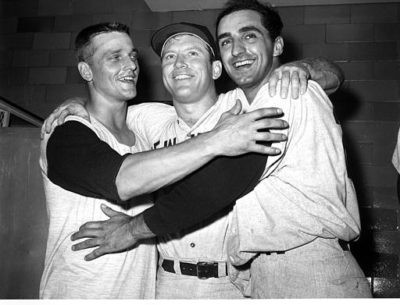
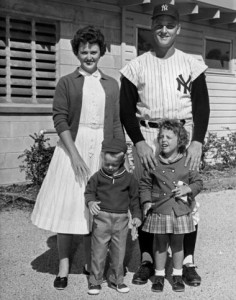
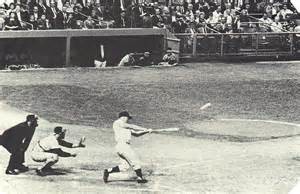
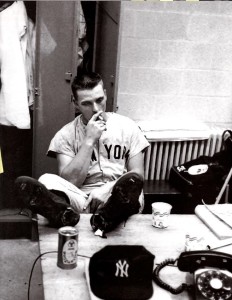
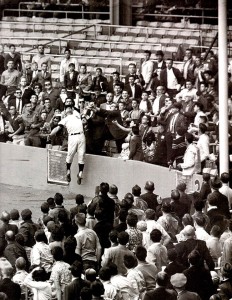

Nice article on Maris. He also won two pennants with the Cardinals when he completely changed his batting style. I forgive a Yankee fan for leaving that out of his fine narrative.
Maris is definitely a member of the Hall of the Very Good.
My two personal memories of him are attending the All Star Game at Wrigley Field in 1962 and seeing him play center field in place of an injured Mickey Mantle. He made a spectacular catch in center that may have saved the game for the AL. Years later I worked a summer job at the Knickerbocker Hotel, where the Cardinals stayed when in town to play the Cubs. Maris called the desk around midnight asking for a pack of cigarettes and I delivered them to his room. He gave me a dollar tip and I sure wish I had asked him to autograph it for me!
Good job, Steve. You and Andy (loved the cigarette story) are right, Maris seemed like a Hall resident, but now way on paper.
Still like my “Honorable Mention” category idea. They should adopt it at Cooperstown. This way Roger and other deserving players would be officially recognized for their extraordinary accomplishments.
Thanks Bill…i like that idea too!
I enjoyed the article as it brought back fond memories of that ’61 season. Back then, I was a very young, but, enthusiastic Indians fan. Nevertheless, I followed the home run ‘race’ between the M & M boys, particularly as it entered the latter part of the season. I even started cutting out headlines from the sports page which covered the race. The only one that survived is one that boldly states “Maris Hits 57th” with a nice photo of Maris at the plate, along with a depiction of the trajectory of his homer.
I don’t mean to throw a fly into the ointment, but, if Maris deserves consideration, what about the slugger Rocky Colavito? The Rock leads Maris in practically every meaningful category, including career slugging average (.489 to .476), batting average (.266 to .260), RBIs (1,159 to 850), home runs (374 to 275), doubles (283 to 195), hits (1,730 to 1, 325).
Colavito didn’t have the advantage of having a “short porch” as did Maris, a significant advantage for Maris. DiMaggio once said that playing in Yankee Stadium, with its cavernous left and center field, cost him typically 15 home runs per year.
By the way, trivia question: who had more 100+ RBI seasons, Colavito or Mantle?
Answer: Colavito had six 100+ RBI seasons to Mantle’s four.
Thanks Ray, all good points. I like the comments about Rocky too. I’ve written a couple article about him here on the site. If you put his name in the search function, they should come up if you care to read them.
Gary, thanks for the info on the other Colavito articles. I thoroughly enjoyed reading them, although reading about the “trade” still resonates like chalk on a blackboard!
Frank Lane destroyed a * very fine Indians team with one disastrous trade after another, but the Colavito trade was the one that almost destroyed baseball in Cleveland. During those dark baseball decades following the “trade,” it was not unusual at all for the crowd sizes at cavernous Municipal Stadium to be less than 5,000. Like hundreds of other fans, we would typically buy a cheap “General Admission” ticket and by the end of the 2nd. inning, move down to the box seat section. The ushers seldom seemed to mind. Rumors of the team moving to another city were rampant back then, and most fans (and writers) attributed the decay of Cleveland baseball to Lane’s Colavito/Kuenn trade.
I can remember exactly where I was when I heard the radio broadcast announcing that our favorite player was traded. Quite frankly, along with the rest of the kids I played ball with, I never even heard of Harvey ‘what’s his name,’ which added even more insult to injury.
* The Indians finished 2nd. six times and won the pennant once in the decade of the 1950s. Trader Lane literally destroyed a very successful franchise.
After I wrote the essay making the case that Rocky belonged in the HOF, I actually got a nice note from his granddaughter, Gina Marie, thanking me and letting me know that she showed it to Rocky and that he was real pleased with it. That was nice to hear. Just checking my records, I got that note from her on June 16, 2016.